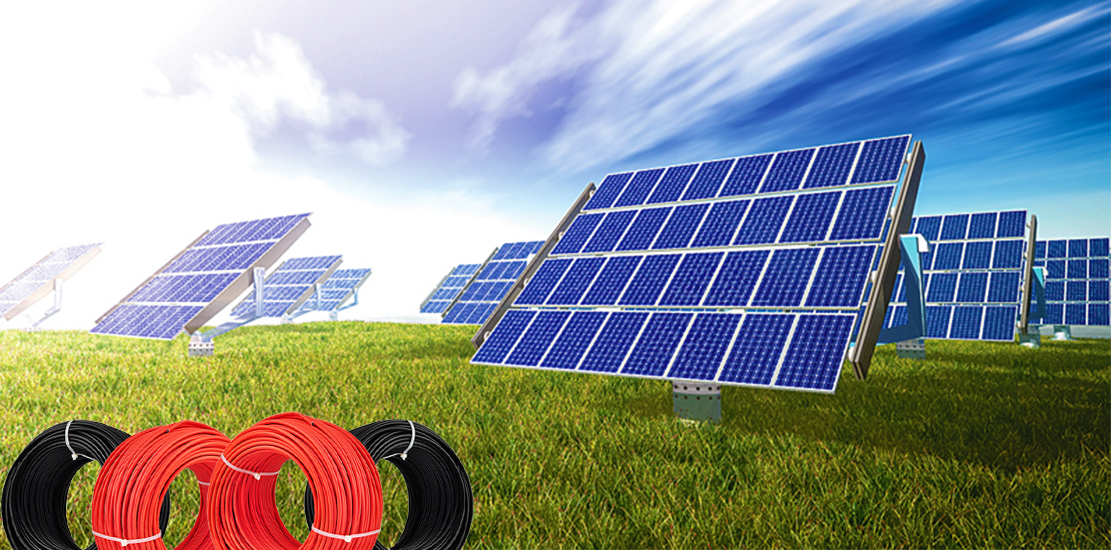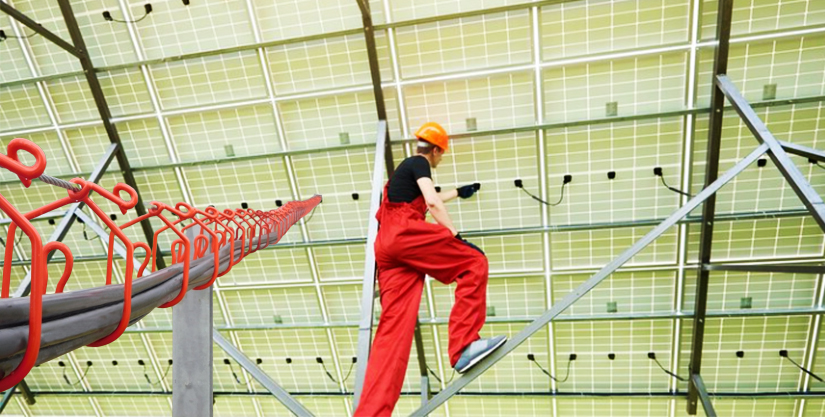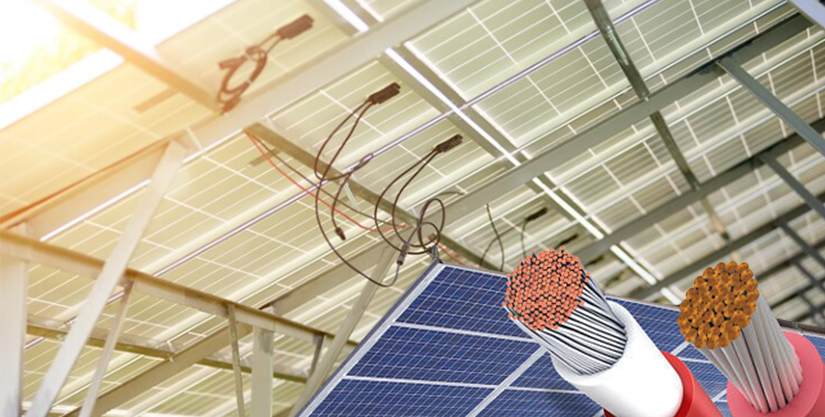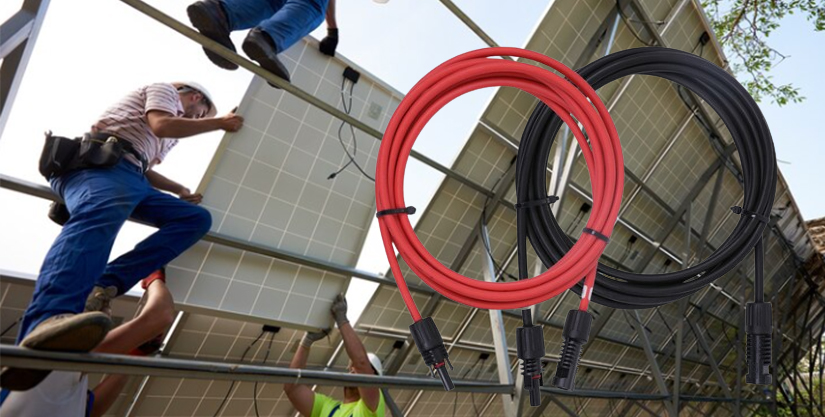
The Rise in Demand of Solar Cables for PV System
The scarcity of non-renewable energy sources leads to the demand for power generation from renewable energy sources. Solar energy contributes to a large extent to renewable energy generation.
With it, the usage of solar cables for Solar Photovoltaic (PV) Projects is increasing. Solar cables are a crucial component of PV projects helping transfer DC solar energy through a PV system. These cables are available in different forms, such as DC solar cables, DC main cables, and AC connection cables, for performing under different temperatures, weather conditions, etc.
Gloster Cables manufactures Solar PV cables meeting several general and construction requirements.
Solar Cables and its Importance in PV Project
Solar cables safely transfer DC solar energy across a photovoltaic system. These cables need to get designed with high mechanical strength to endure the harsh environment of the PV system and severe weather conditions.
Photovoltaic system arranged and installed in the form of arrays facing the sun receives solar energy. Solar cables connected on the DC side of the system carry the photon energy in the form of DC to storage batteries.
The quality and performance of solar cables have a vital role in extracting solar energy with higher efficiency in the PV system. A minute increase in cable resistance increases I2R loss, which is a high energy loss. Solar cables have to function in an open atmosphere and demand robust mechanical properties to withstand environmental severities, such as UV radiation, dust & dirt, temperature variations, humidity, insects, microbes, etc.
Requirement and Type of Solar Cables for PV System
A solar power project requires a different type of Solar cables to produce solar energy. A solar power plant uses both DC and AC cables. PV panels and inverters connect through DC cables, whereas inverters and sub-stations connected via AC cables.
Solar cables must meet a few general and construction requirements for the PV system adhering to international forms such as flexibility, single core with crosslinked insulation and sheath, low smoke, halogen-free, stringent high voltage withstanding capability, ozone resistance, UV resistance, flammability requirements, etc.
General Requirement of a Solar Cable

 Voltage Level
Voltage Level
The usage of solar cables in a standard PV project depends on the different voltage levels based on the requirement. A low-voltage power cable connects the panel to the combiner box, the combiner to the inverter, and the inverter to the transformer. However, medium-voltage power cables connect the transformer to the substation, and high-voltage and extra-high voltage power cables connect the substation to the grid.
Stand-alone or rooftop Solar PV systems are of low voltage, usually less than 100 volts. The grid-connected solar PV systems are of higher voltage levels. Because of complexity and safety reasons, the solar PV system can get operated only by skilled professionals.
 Voltage Drop
Voltage Drop
The size selection of solar cables varies with voltage drop between the PV array to the inverter. As per the British Standards Institution specification for ‘Electric Cables for Photovoltaic Systems’, BS:7671, the overall voltage drop between the PV array and inverter should be less than 3 percent. And to maintain this minimum voltage drop, solar cables of shorter length and size are preferable.
 Variable Weather Conditions
Variable Weather Conditions
Solar cables need to perform in variable weather conditions. Therefore, they get designed to meet a temperature range of - 400C to + 900C. For a max ambient temperature of 900C, the expected maximum conductor temperature is 1200C.
 Area of Application
Area of Application
The use of solar cables also varies with its area of application. For example, a solar cable of a single conductor with double insulation gets routed through a suitable conduit/trunking system. Solar cables with single conductors and single wire armoring perform better in mechanically robust conditions. Multi-core single wire armoured cables application is preferable for the main DC cable between a PV generator junction box and inverter.
Constructional Requirement of a Solar Cable
The solar cable should include flexible (class 5) and heavy-duty tin-coated copper conductors. The conductor must provide low smoke, halogen-free cross-linked insulation, and over-sheath. As insulation and sheath perform at a high-temperature range with high mechanical stability, flame retardant, and halogen-free conditions, cross-linked polyolefin copolymers get preferred to meet requirements.
Solar cables are usually black as they work in an open atmosphere under UV radiation. Cable insulation and jacket material need to meet temperature variation. In comparison to PVC and XLPE materials, aging temperature, hot set temperature, and cold bend temperature are stringent.
The thermal endurance test helps determine the temperature index(>120C) and ensures expected performance. A dynamic penetration test helps determine the mechanical load of the cable. With long duration damp test, the stability of cable material against any mechanical properties’ degradation gets determined. Solar emission test helps determine 60 percent light transmission in case of fire.
Type of Solar Cables Required for PV System

The type of solar cables used for PV systems is DC Solar cables, Solar DC Main cables, and Solar AC connection cables.
Type of Solar Cables Required for PV System
DC solar cables are module or string cables and single core cables with insulation and sheaths. These cables are with suitable connectors and are pre-built into panels that cannot get changed.
Solar DC Main Cables
DC main cables are large power collector cables connecting positive and negative cables from the generator junction box to the central inverter. It is single or two-core cables. The size of these cables is 2mm, 4mm, or 6mm. It gets used mainly for outdoor installation.
Solar AC Connection Cables
AC connection cables interconnect the solar power inverter to the protection equipment and the electricity grid. Small-scale solar systems with three-phase inverters use a five-core AC cable to connect to the grid.
Importance of Selecting Quality Solar Cables
The selection of a high-quality and appropriate solar cable is crucial for the proper functioning of a project and to give good returns in terms of value. Some other reasons for quality solar cables are as follows.
 Reliable electricity supply
Reliable electricity supply
We need the right type of solar cables with appropriate specifications for optimum performance and reliable electricity supply with minimum energy loss.
 Safety Hazards
Safety Hazards
A poor-quality cable for generating solar energy from a roof-top or ground-mounted installation can get outer-insulation damage easily and create a safety hazard.
 Face adverse weather conditions
Face adverse weather conditions
Solar cables must be resistant to atmospheric challenges such as UV radiation, ozone, and humidity.
 High dielectric strength
High dielectric strength
Solar cables with high dielectric strength make them better electrical insulators and are suitable for harsh weather conditions.
 Withstand temperature Variation
Withstand temperature Variation
These cables must withstand a temperature variation of -40oC to 120C to perform effectively in high and low-temperature conditions.
Solar Cables: The lifeline of Solar PV Project

Solar cables are the lifeline of a solar PV project. However, contributing a small share in terms of the value of the overall project. The efficiency and stability of a project heavy rely on these solar cables. Therefore, selecting a quality solar cable becomes significant in running a PV project and ensuring its safety.
Gloster Cables being in the wires and cables manufacturing domain brings a high-quality and different range of solar power cables for PV projects. The solar cables manufactured at Gloster get tested on various parameters, such as solar emission and damp and dynamic penetration tests, to perform effectively in different environments.
CONTACT US